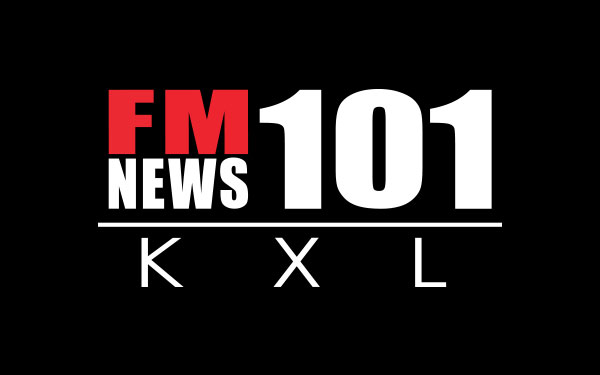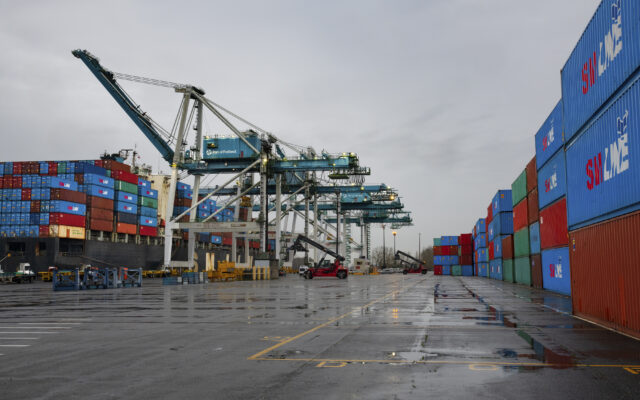Shining Light On Solar Energy, The Real Cost Of Solar Power

The below document was submitted to us by a listener who has been determined to be a reliable source, we are posting this with his permission and under good faith of its accuracy. If you would like to download a copy of the piece, please click the link below. All credit to Chuck Martin.
Solar Power in Oregon: Savior or Foil
By Chuck Martin
Bloomberg News recently reported on two pilots that recently completed a flight around the world in a plane with 12,000 solar panels. They predicted “that within a decade, commercial flights with electric aircraft will become a reality”.
We know the earth’s solar rays heat the earth and provide life on earth. Science and engineering have developed technology so that sunlight, using photovoltaic cells, can produce electricity. The first solar cells were invented at Bell Laboratories in October, 1955. As described in “The Idea factory – Bell Labs and the Great Age of American Innovation by Jon Gertner” In 1956, Daryl Chapin figured that it would cost the average homeowner nearly $1.5 million to buy enough Bell solar cells to power his house”. The only viable use at that time was in outer space where there were no alternatives. The first multiple solar panels were on a Telstar satellite launched in July, 1962.
With the development in recent decades of equipment called “inverters”, the small direct currents produced by solar panels can be collected and converted into alternating current that can be fed into the existing electrical grid.
As the world consumes more and more electrical power and a great deal of that relies on fossil fuels and resource extraction, governments, utilities and the general public have been researching and developing alternative power resources. Harnessing the sun and the wind have been the two best candidates. We have had long experience using a third source, non-carbon based hydroelectric power.
The sun is free, but is only useful when it is shining, just as the wind is free and useful only when blowing at certain wind speeds. Another source of electrical power, water power, has been viable when there was sufficient volume of water and head (elevation drop) to turn turbines.
These are amazing times in the electric power world. Some citizens’ call for the closure of coal fired power plants and the cessation of coal, gas and oil extraction and transportation. The press is constantly warning about global warming and climate change, and having to cut down our carbon footprint. Oregon’s two major electrical utilities have agreed to raise their renewable energy to 50% by 2040. Cities like Portland have declared that they are going to use only renewable by 2035(as if electricity knows where it was generated).
So should we be switching as fast as possible to non-carbon, alternative fuel sources? What should we know about the technical and economic factors?
There is little evidence that most people know anything about electricity, only complaining bitterly when they do not have any. There also is a dearth of information about the costs of electricity by source, and it seems like many people do not really care what the costs are. Solar and wind are touted as the great saviors of the planet.
This article focuses on solar energy. I am writing this article because I have firsthand knowledge to share. I am the Chairman of Airport Solar Power Corporation (ASPC), the company that owns what was in 2008, and still may be, the largest solar array (or roof mounted array) in Oregon. ASPC is owned by a non-profit corporation. ASPC and its’ parent corporation have always tried to be transparent about the solar installation, especially since it was constructed with public funds. The performance of the array has been on the internet under www.sunnyportal.com . In this site, go to “plants owned plants” and then enter the ZIP code 97230 and then hit “Portland Habilitation Center”. What makes disclosure noteworthy is that the Department of Energy in the State of Oregon requires no performance disclosure from any of the ventures to which the State has given Business Energy Tax Credits (BETC).
The ASPC array, activated in 2008, now has 7 full years of performance data, and has been operated continuously. The installation has 4,830 solar panels connected to 7 inverters, with a power purchase agreement with Portland General Electric. It is hoped that this summary of what that installation has experienced along with other information on solar power will help citizens better understand solar power and its’ limitations.
The Oregonian on 8/2/2016 printed an article about EU renewable energy by Daniel Nebert, Professor Emeritus in the Department of Environmental Health at the University of Cincinnati, who is now living in Oregon. He stated, “Denmark’s green policies have become too expensive to maintain’ and “that in Germany, wind and solar at unpredictable times had provided too much power which then damaged the electrical grid and made the system more vulnerable to blackouts”. The article stated that, “It has become obvious that green energy cannot be sustained without long-term government subsidies”
Solar power has its’ share of critics. On March 16, 2005, the Oregonian printed an article by Jeff King, a senior resource analyst with the Northwest Power and Conservation Council which stated, “It’s window dressing”, and he finds “solar is just a blip – under 1% in the accounting. If the objective is to reduce CO2, there are better ways to do it”.
The Oregonian on April 2, 2017 reported about consumer complaints to Oregon’s Attorney General alleging solar company fraud relating to “the true costs of installing panels” and “the promised energy savings that never materialized”. Many complaints have come from Oregon residents who have entered into leases or third-party financing for residential solar systems. The newspaper goes on to say, “The State of Oregon has never undertaken any systematic look at the rooftop industry, which is about a $40 million-a-year market. The average cost of a residential system is just under $23,000 for the average 6 kwhr system.” Potential owners of solar installations have been able to receive state and federal tax credits , varying from year-to-year, as well as Energy Trust rebates. The Energy Trust has, depending on availability, reminded homeowners that claiming a combination of tax credits and energy rebates can provide up to 80% of the initial investment.
Those who dream about lofty goals for solar need to understand the costs of production and the limitations. Until there is much more progress in the storage of electricity, solar will be just one source that must be used in concert with other proven sources. Whether the cost will ever be reasonable is discussed in this paper.
Power fundamentals and solar limitations
Electric power, which all of us pretty much take for granted, must be generated, transmitted and used. Usage varies from minute to minute, hour to hour and day to day. The general population knows very little about electricity. Let’s start with voltage, amperage and wattage. Think of voltage as “power’ that is pushing amperage, which is current. The product of volts and amperage is wattage which is the measure of the electrical output per unit of time. This is known as Kwhr, or kilowatts per hour (“kilo” meaning 1,000). Watts individually are a small unit of power.
We usually think of voltage as being 115V or 230V which are common household voltages. Both are available at our house service entrance with appliances like clothes dryers running at the higher voltage. The voltage is much higher at the generating source, but is “stepped down” using transformers like those on the pole outside your house.
Our electrical system providers like PGE and PP&L must control the voltage on their systems. If voltage gets too high or too low, electrically powered items like motors will overheat and fail (like your refrigerator motor). Therefore those generating power must have ways of carefully controlling voltage. At dams, turbines can be started or shut down. Natural gas turbines can be started or shut down. Some sources like coal fired power plants take longer to adjust generation.
I visualize an electrical engineer sitting at a console with a “system voltage” dial in front of them calling for more or less electrical generation from within their system or moving power into or out of his system (as electricity is “wheeled” between systems in other states).
So what about wind and solar? Electric power has one critical limitation- how to store it. By far the most common way to store is with batteries, but their capacity is tiny compared to total electrical power. However, the size and economics of electrical storage are great challenges, and increases in storage capacity are occurring slowly. While water can be held behind a dam and used selectively, wind and sun power is a ‘use it or lose it’ proposition. For example, the wind blows more at night when energy consumption is lowest. Solar power is produced during sunny daytime, and actually matches well with air conditioning demand. For some very small installations away from the electrical grid, solar panels have worked well.
Even remote solar installations can have problems. I was responsible for designing an informational neighborhood kiosk, and we wanted informational displays illuminated until 9 PM all year. There was no way to easily connect to a power outlet. We decided to put two solar panels on the top of the kiosk mounted in the optimal southerly direction. We had battery packs installed and used LED lighting so as to require as little power as possible. We found that in the summer, the batteries were charged but were not needed much or at all as daylight was longer. In the winter, there was so little sun radiation in Portland that the batteries had little charge and would not even begin to keep the lights on from 4:30 to 9 PM.
Government pushes solar power
With alternative energy a political issue, government has jumped in with both feet.
On November4th, 2018, Governor of Oregon Kate Brown signed an Executive Order with sweeping mandates. One provision was stipulating that homes built after September 2020 must be equipped for solar power installation and commercial buildings must meet the same mandate by October, 2022. While the implementing regulations are not known, this does not make any sense and runs up the cost of construction unnecessarily. Portland General Electric, one of our states’ two large electric providers, is asking residential consumers to pay an additional amount every month for “alternative energy”. They state on their letter that 25% will be for solar facilities. On February 15th, 2019 the Oregonian reported that a solar installation would be built by PGE in Eastern Oregon in 2021. What will the payback be?
The Oregon Legislature in 2007 passed House Bill 2620 that requires public agencies spending over $1 million in new construction to allocate 1.5% of the projects budget to solar energy. Because of the law, Multnomah County is putting solar panels on their new building in Portland with a payback estimated in the May 16th, 2018 issue of Willamette Week to have a 100 year payback.
The cost and benefits of ASPC’s solar installation
The installation of the array shown below was placed on a new manufacturing building that was built to maximize solar power production.
The cost of the array was just under $7,000,000. The cost was about average per Kwhr at the time installed. The funding came from $5,420,000 of BETC tax credits administered by the Oregon Department of Energy [Note #1} that were marketed to an Oregon for-profit corporation in order to reduce its’ State tax liability (and increase everyone else’s), $1,230,000 from the Energy Trust of Oregon (funds from Oregon utility customers) and the $350,000 balance from two 501 (c)(3) charitable corporations. Because of the installation’s size, it received a good deal of publicity. Projects like this were incented and supported to promote alternative energy. As neither the Oregon legislature nor the Oregon public utilities put any “Buy American” clause in the rules, the ASPC panels were purchased from a Canadian manufacturer.
The power rate paid ASPC by contract with PGE was 0.07 cents per Kwhr. This has recently been increased to 0.08 cents. The installation’s electrical production is shown below in Kwhrs by calendar year.
2009 838,000
2010 777,000
2011 666,200
2012 704,600
2013 720,000
2014 760,600
2015 780,600
2016 557,000
2017 561,600
2018 722,200
Average 708,780 [Note #2}
ASPC had thought, from the array ratings provided by the panel manufacture, that they would produce more, but the results are 13% below projections. The panels were oversold or are underperforming.
Some variation in annual output can be attributed to weather. However, the notable swings in output are believed to be undetected or unresolved problems with the inverters that change direct current to alternating current and the lack of panel cleaning that is known to have occurred during the low output years.
The average annual value of the power generated by ASPC during these years was $52,996. [Note #3]
The ASPC contract stipulated that power was to be credited against the owner’s electric bill, with any excess production value to be given to low income assistance programs. The on-site experience is that the value of the power generated has closely equaled the owner’s on-site electrical consumption.
So what has been the payback for this installation?
132 years [Note #4].
Every private-sector capital investment has a return-on-investment and payback calculation. In my experience, the internal corporate payback expected has been around 5 years (range 3-7). Governmental capital expenditures are not calculated on the same basis, as it is difficult to calculate because of intangible values (what is the return –on-investment of a police car?)
In my experience, no business would make this kind of investment. No one even knows how long the equipment will last or how quickly it will become obsolete.
Remember that the ASPC site is a unique installation. Each solar array will have its’ own costs and production at its own geographical location. This report is a rare look at a specific installation in Portland, Oregon where data is available.
11 other things you might want to know about solar power
- What is the life expectancy of the system?
Unknown. Do panels and the collection system lose efficiency over time? There are no mechanical parts to wear out in the panels, so that is not a consideration. The inverters, a collection of electrical components, may have lifetime issues due to heat and oxidation. Probably the biggest consideration would be obsolescence of both panels and inverters. Every business and taxing authority works with the concept of “useful life expectancy”. It will be interesting to see how the system at ASPC is doing 15-20 years after startup.
I add a special note about the operating expectations along the coastlines adjacent to saltwater. Experience warns us that the life expectancy will be far less due to corrosion. How inland this effect reaches probably depends on topographical features and wind patterns.
Wherever high winds occur, solar panels are at risk. Depending on the wind direction, panels could be ripped of a roof or, due to winds blowing directly across the face of the panels, sucked off the roof (Bernoulli’s Principle).
- What servicing do solar power panel installations require
In 2008 when the ASPC installation was “fired up”, there were no guidelines as to what maintenance, if any, was required. Some thought that the falling rain would keep the panels clean. Realizing that falling rain does not keep your car clean, we realized that the panels were getting dirty. We had to invent a washing system. As the several aisles in the array were far apart, developing a washing system that was low cost and effective took some trial and error. ASPC once washed all panels annually, not not currently. The cost/benefit ratio is still unclear, and the proper frequency is arbitrary.
- The changing cost of solar installations
Proponents of solar power ague that installations like ASPC which were installed in 2008 are over-priced on today’s market. It is true that the costs of panels, particularly from China, have come down a great deal (often putting North American manufacturers out of business). The cost of panels has come down 80% according to a recent claim by Agnus Duncan, Chairman of the Oregon Global Warming Commission in a December 11, 2008 Oregonian “In my Opinion” article. While this may be true, the total installed cost of a system has come down far less. Other components such as the installation costs and the costs for the inverters and other electrical components now cost more. Looking at the ASPC installation, even if the total costs had been 70% lower, the return-on -investment would have been impractical to any business person having to pay for the installation.
- Is my solar system working?
Owners of large arrays can watch performance indices over time. Small array installations may or may not be metered. Watching measures such as Kwhrs can be a little misleading, as sunny weather over any period of time is a system variable.
At ASPC, output dropped 6.3% the second year and another 14.3% the third year. It then increased for each of the next 4 years. The two declines could have been caused by weather, inverter failure, panel cleanliness or panel failure. At one point we did find that one of the seven inverters had stopped working and required repair. We were not sure how long it had been inoperative. After several years, we did decide that annual cleaning was necessary.
But are all the panels working? ASPC was were approached by a researcher who asked if he could fly over the array and scan it with infrared equipment (FLIR). Once this was done, ASPC was informed that 47 panels were not working. A block of 45 panels turned out to not have been connected on the original installation. Two other panels had failed or were failing. Fortunately, ASPC had ordered spare panels and could replace these. The panel manufacturer was out-of-business, so ASPC had no warranty.
Solar panel quality is an issue. A May 28, 2013 article in the New York Times stated, “The solar panels covering a vast warehouse roof in the sun-soaked Inland Empire region of Los Angeles were only two years old when they began to fail….Around the world, testing labs, developers, financiers and insurers are reporting similar problems and say that the $77 billion solar industry is facing a quality crisis….”. “Based on our testing, some manufacturers are absolutely swapping in cheap Chinese materials to save money, ”says Jenya Meydbray, Chief Executive of PV Evolution Labs, a Berkeley, Calif. testing service.
- Lack of accurate annual solar measurements by location
Who is measuring the available sunlight each year? For decades the National Weather Service (part of NOAA) measured at major weather stations whether the “potential sun” was shining. With a computer program knowing when the sun came up and when it went down, this time frame was the “potential”. They had a circular, photovoltaic array in a circle with a post in the middle. A computer regularly surveyed all the cells, and, if there was a difference in readings, the sun was shining as there was a shadow cast on some cells. The data I had obtained in the early 1990’s showed how diminished the Portland potential for sunshine was compared to other metropolitan areas.
When ASPC had declining output in the first two years, I went to the Portland Airport USWS office to see if it was because we had less sunshine those years. They informed that this measurement had not being recorded since 1995, just about the time when it really would begin to be helpful! For solar installations.
- Problems with installing solar panels on existing buildings.
As covered elsewhere, to be productive buildings north of the equator must have a south facing exposure with close to the optimal pitch.
Every roof has an architecturally designed roof loading. This allows for the weight of the roof and its’ support structure, wind, snow and ice. Adding a solar system to an existing roof adds weight that was not planned for. For example, would anyone think of putting on slate tiles on a roof that was designed for shingles?
Furthermore, roofing experts advise that walking or working on a roof or adding penetrating elements to an existing roof all increase the risk of violating the integrity of the roof and its purpose.
To install solar panels, each panel has fasteners in the panel support system that go through the roof. Every penetration is a potential point for leakage and rot no matter how well sealed.
Depending on the materials used for roofing, leaf collection, needle collection, moss and other living organisms on a roof can affect roof life. While moss favors north facing exposures, the addition of solar panels on the south face creates similar, shaded conditions. Purchasers mounting solar systems on existing roofs should consider the effects on roof longevity.
Other factors that can reduce productivity are trees, hills or mountains that block the sun’s rays (Northern Hemisphere).
- Solar panel rating and interchangeability
A necessary warning to all solar installations is that if panels fail, you can have problems replacing bad panels. The original manufacturer may be out of business or changed their dimensions /mounting system. As is often true for new products, both mechanical and electrical, there is no standardization. As markets mature, standards for size and mounting may be adopted by industries, associations or by governments. As you will read elsewhere, ASPC had this problem. Fortunately they had purchased a few spare panels. The innovators that jump into product markets or adopt systems early on are often left “holding the bag” once standards are adopted and published.
Power ratings are difficult to verify because of a lack of definition as to how panels are to be tested, by whom, and how verified. The ASPC panels were promoted as “exceptionally high power density and low-light performance”. Under the very best conditions, the panels never produced as rated.
Examples of standards are ISO (International Organization for Standards), NEMA (National Electrical Manufacturers Association) and ANSI (American National Standards Institute). A word search of these three associations’ websites did not show any standards for solar panel testing, mounting dimensions or size. The standards that were found related to solar panels for spacecraft and solar panels for heating water.
- Solar power related to location
Solar power is produced by solar radiation. This radiation is diminished by transiting through the earth’s atmosphere and by cloud cover. Golfers know that sunburn risk is significantly reduced on cloudy days. People know how dangerous it is to look directly at the sun, but also know that they can watch the sun set.
At the christening of the ASPC installation, the Governor of the State of Oregon and officials were there to watch the cutting of the ceremonial ribbon. It was a beautiful, sunny day, and the inverters (converting DC power to AC power) were all humming audibly. Just as the ribbon was cut, the whole system shut down! A single black cloud in the sky had moved in front of the sun. No sun – no power!
Several factors determine the availability and the strength of solar radiation and its’ ability to generate electrical power.
- The angle of the sunlight. Portland never receives sunlight directly from overhead. This only happens between the Tropic of Cancer south of the equator and the Tropic of Capricorn north of the equator – points 23 degrees twenty six seconds and 13.4 minutes north/south and then only at the summer solstice. Portland is just over 45 degrees north, so our annual hours of potential sunshine are less and the suns’ rays are diminished by cutting through more atmosphere.
Because the sun is always south of Portland, all solar installations must face south. The optimal angle is 32 degrees of pitch. The ASPC installation is constructed on a roof tilted at this angle. [Note: many solar power installations, particularly on residential structures, are not faced at the correct direction or angle to obtain the maximum solar potential. ]
- The sun’s rays are affected by clouds. I had researched the subject of Portland, Oregon weather about 20 years ago, and was informed by the USWS at that time that of the 36 largest metropolitan areas in the United States that Portland only got 47% of the potential sunshine, and that was the next to worst (Seattle at 46% was the worst). The USWS defines a “clear day” as one with less than 30% of the daytime sky obscured by clouds. Portland has 68 clear days annually on average, and Seattle has 71.
- You cannot generate power when the panels are covered by snow, ice or fog. Production is diminished by smoke from forest fires and poor air quality The ASPC installation is on the Columbia River near the Portland Airport. While not a major problem, these factors are present on enough days that they cannot be ignored.
- So where is the best physical and geographic location?
The best physical location appears to be ground mounted panels. The installation, servicing and cleaning costs are much less than roof-mounted systems. The only site costs are vegetation control. Sites like golf courses and public rights-of-way seem ideal. In addition, the installation must have reasonable connectivity to the power grid.
The best geographical location in the continental US is probably in a state like Arizona, as this state has sun potential that is very high and it is closer to the equator. Hawaii would be the best state, as it also has high sun potential and is only 21 degrees north of the equator.
There are some areas where solar is a more viable strategy. A recent Washington Post story told about a tiny island named Ta’u, 17 square miles in area and 14 degrees south of the equator in the Pacific Ocean. Getting fuel for diesel generators was very expensive. The 790 residents (2010 census) are now using 100 % solar power. They have installed a 1.4 megawatt solar power installation (5,000 panels). They have 6 megawatts of battery storage that provide 3 days of electricity without sun.
- Portland’s newest, most visible roof mounted solar installation
In downtown Portland, a new solar installation sits atop the completely remodeled Edith Green – Wendall Wyatt Federal Building. (See picture) This array, a notable architectural element, has 715 panels covering 13,000 square feet. The federal General Services Administration literature states that this array will produce 200,000 kwhr of energy annually. What they have not published, nor may ever publish is the cost of this installation. Based on the actual measured experience of ASPC, I would be surprised if they can get 120,000 kwhr of production. I am sure that they can measure their output, but it will be interesting to see if it is ever made public.
11, Oregon Power Consumption vs One Solar Panel
Let’s look at the big picture first. The US Energy Administration reports that Oregon’s 2015 energy consumption, excluding wind, solar and electricity produced by the few industrial installations with their own power plants, was 47,263,974 megawatts (add 6 zeros to get watts). Based on the average production per year of the ASPC array and its’ building coverage area, if every square foot in Oregon’s 98,466 square miles was covered by solar panels it would produce only 60% of the states’ annual power consumption.
Looking at electrical production, each of the 4,830 panels at ASPC in the first 7 years produced 155.2 kwhr per year. The daily average would be 425 watts, only enough to power seven 60 watt light bulbs burning all day and night).
CONCLUSION
Solar power, at least in Oregon, is not the savior it is promoted to be! It is, based on the analysis presented here, a foil. The Oregon Legislature and the Energy Trust have both been working hard to spend money on technologies that have totally unacceptable returns. They give away money with no transparency and no requirement for concrete results over time.
Who speaks the facts? Is there a single lobbyist or expert talking about actual challenges, problems and actual results? I think that we are on a trajectory that will waste millions of public and private dollars on the quest to produce electricity from solar power in Oregon.
___________________________________________________________________
NOTES
Note #1 The June 28, 2017 Oregonian, in an article about this Department, referred to them as “ …one of Oregon’s most dysfunctional agencies”
NOTE #2 For comparison purposes, one source stated that a gas-fired turbine power plant commonly has a production rate of 400 megawatts (one megawatt equaling 1,000 kwhr)peak per/hour.
Note #3 For the record, there has always been a battle between producers of power from alternative sources and power utilities who buy it regarding the rate per KwHr that will be credited the producer.
Note #4 The array owner had no investment, so the annual reduction in, or elimination of their electric bill was a great benefit.
About the author
Chuck Martin is a Portland native. He has an undergraduate degree from Oregon State University and an MBA from the University of California –Berkeley. He retired as President and owner of Hampton Power Products. This Oregon Corporation was the largest Toshiba distributor in America, selling electric motors and inverters regionally. His company also marketed two brands of industrial speed reducers nationally. Solar and wind power industries were in the customer base. He continues since 2009 to serve as Chairman of Airport Way Solar Corporation. AWSP had, and may still have, the largest solar panel roof-mounted array in Oregon.
The post Shining Light On Solar Energy, The Real Cost Of Solar Power appeared first on The Lars Larson Show.



